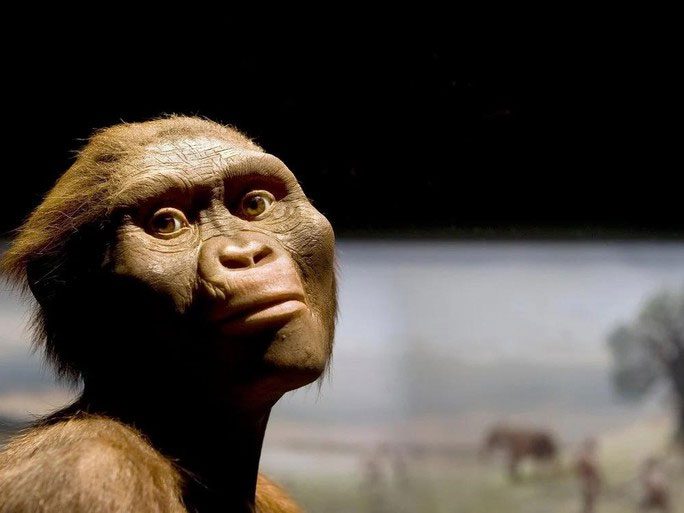Lucy is a “Southern Ape,” specifically Australopithecus afarensis, a species that represents a transitional phase between ape-like ancestors and those beginning to exhibit human characteristics.
Lucy is believed to have been a female, approximately 105 cm tall during her life. Estimates suggest that this individual lived in what is now Ethiopia (located in East Africa) around 3.2 million years ago.

Wax figure of Lucy the Australopithecus at the museum – (Photo: SMITHSONIAN MAGAZINE).
In a new study, independent researcher Ashleigh Wiseman, collaborating with the McDonald Institute for Archaeological Research at the University of Cambridge, has created a model based on Lucy’s fossilized lower body bones.
Specifically, according to a paper published on June 14 in the journal Royal Society Open Science, 36 muscles in each of Lucy’s legs have been successfully digitally reconstructed.
This research aims to answer the question of when humans evolved to walk upright to adapt to life on the ground rather than in trees.
Previously, the species of Southern Ape to which Lucy belongs was thought to have ape-like characteristics, including a small brain and a hunched gait.
However, Dr. Wiseman and her colleagues’ model indicates that this is not accurate. Although Lucy’s brain may have been small and her face not distinctly human, she walked with straightened knee joints, hip joint posture, and an upright stance similar to that of Homo sapiens (modern humans).
The model also reveals the muscle and fat ratios in her legs, suggesting that her legs were muscular like those of modern humans rather than apes. Consequently, Lucy walked and climbed trees in a manner similar to humans, not apes, although her knee joints were still flexible enough to allow for better tree climbing than we can do today.
This discovery may prompt scientists to rewrite the pages of human evolutionary history once again.
For decades, it was believed that the first species to walk upright like modern humans was Homo erectus (also known as Upright Man), which emerged around 2 million years ago—several million years after the Southern Apes.




















































